Moon lander: Japan's Slim reactivates and gets to work
- Published
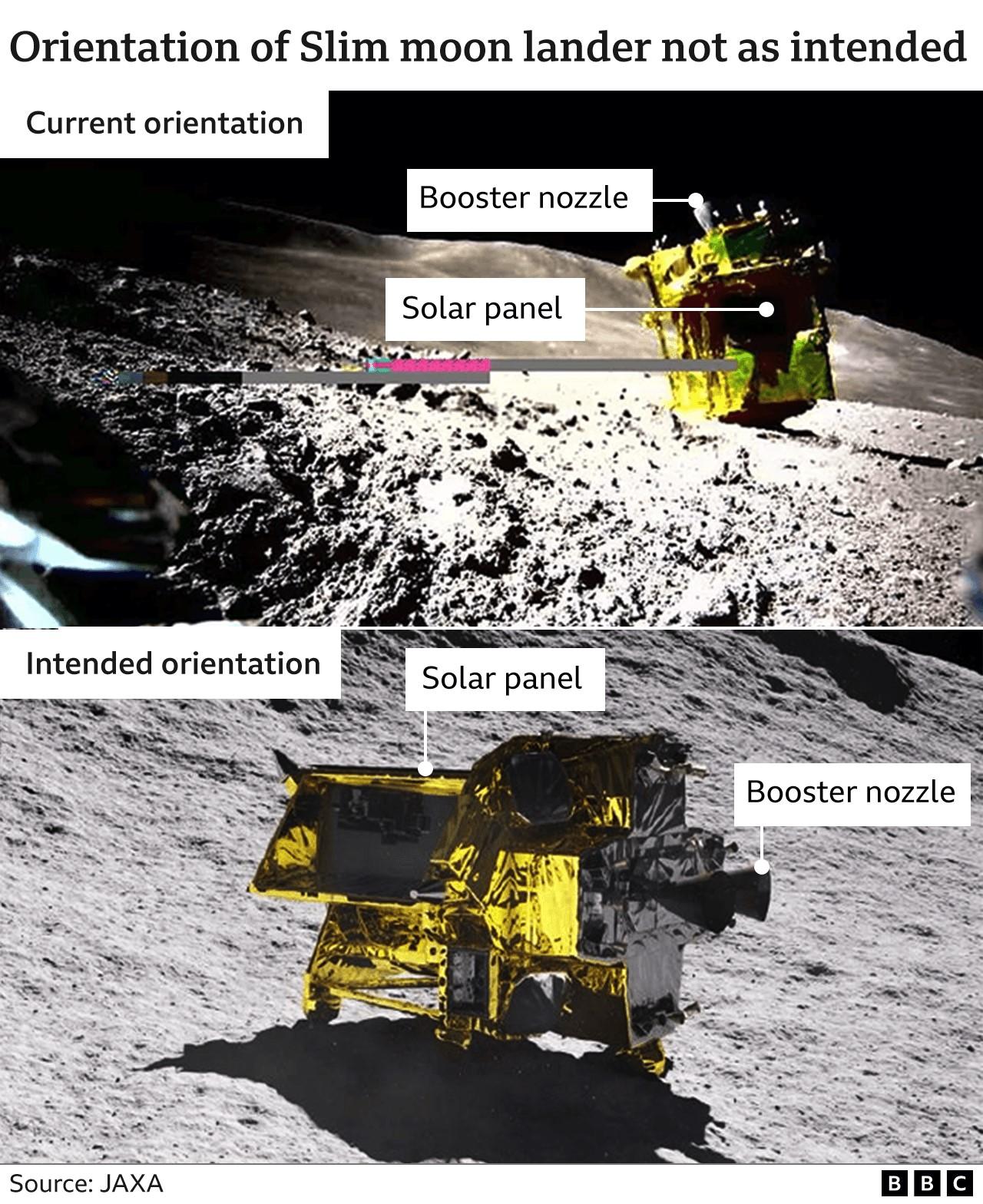
As the Japanese Space Agency put it: "Operations resumed!"
After the Japan Aerospace Exploration Agency (Jaxa) re-established contact with its Moon lander on Sunday night, the craft started to study its surroundings in detail and transmit new images to Earth.
The lander is carrying out analysis that could inform future, much longer missions to the Moon.
One lunar scientist told BBC News: "Now we're really seeing the science."
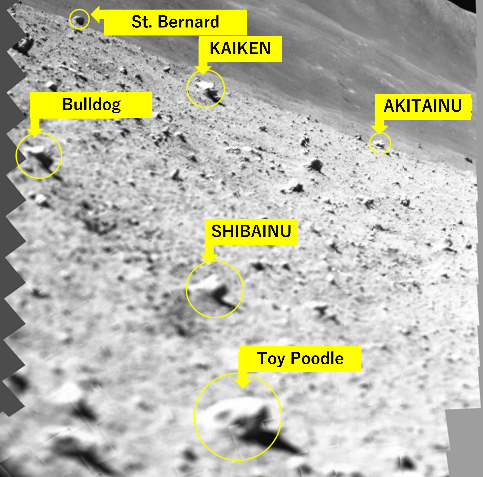
A lunar surface scan mosaic image captured by the Slim
The craft is at a very awkward angle. A picture, captured by the small baseball-sized robot called Sora-Q - which was ejected from Slim moments before touchdown - showed the lander face-down on the lunar surface.
That left its solar panels facing away from the sunlight and unable to generate power. The decision was taken to put the lander into sleep mode - and conserve what power remained - less than three hours after it landed.
That tactic appears to have worked. A change in the direction of the sunlight has now "awoken" the craft.
The mission team had already been able to study images of the landing site and have picked out specific rocks in the area and given each one the name of a dog breed - apparently to give an indication of the size of each rock. On Monday, the team released a grey, rocky close-up image - this was the lander's scientific camera zooming in on a rock that has been named "toy poodle".
It might not look like a spectacular photograph, but the snapshot was taken with what is called the Multi-Band Camera or MBC, which can essentially capture images that reveal the composition of the rock.
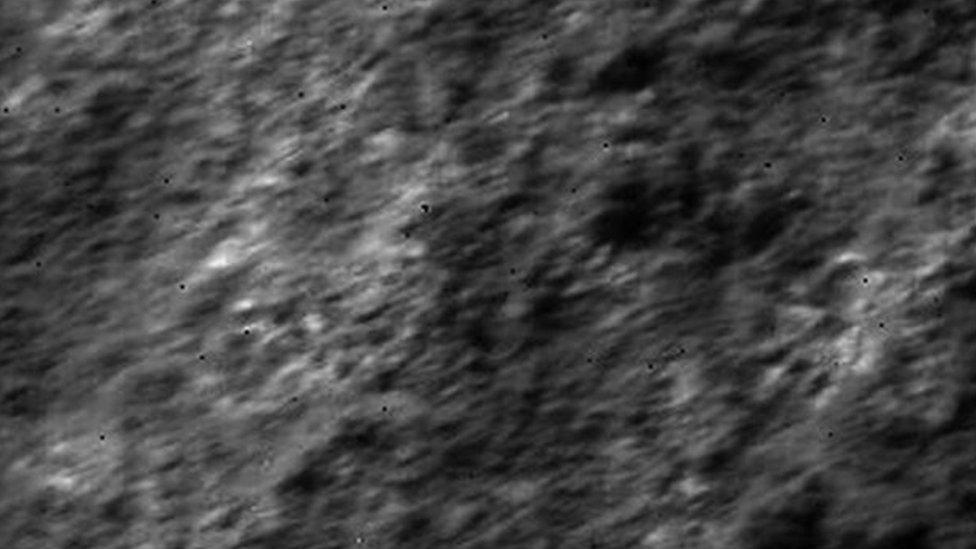
The blurry, grey image is a close-up analysis of a rock nicknamed 'toy poodle'. Images like this should reveal the composition of lunar rock
"The camera responds differently - in different wavelengths - to each of the minerals that are in this rock," explained Open University lunar scientist Dr Simeon Barber.
Seeing that will enable scientists to build up a picture of the Moon's history. "If toy poodle is completely different to the rocks around it, that might suggest it was transported there by an impact event," explained Dr Barber. "So all this detail allows us to piece together more about what's happened on the Moon since it was formed."
Being able to pinpoint rocks and examine them in this way could also reveal substances on the lunar surface that future missions might be able to use to make fuel or provide a water supply.
"This detailed geology is the cherry on the icing on the cake," said Dr Barber. "[The mission is] already a success in my mind - I think engineering so far has been fantastic."
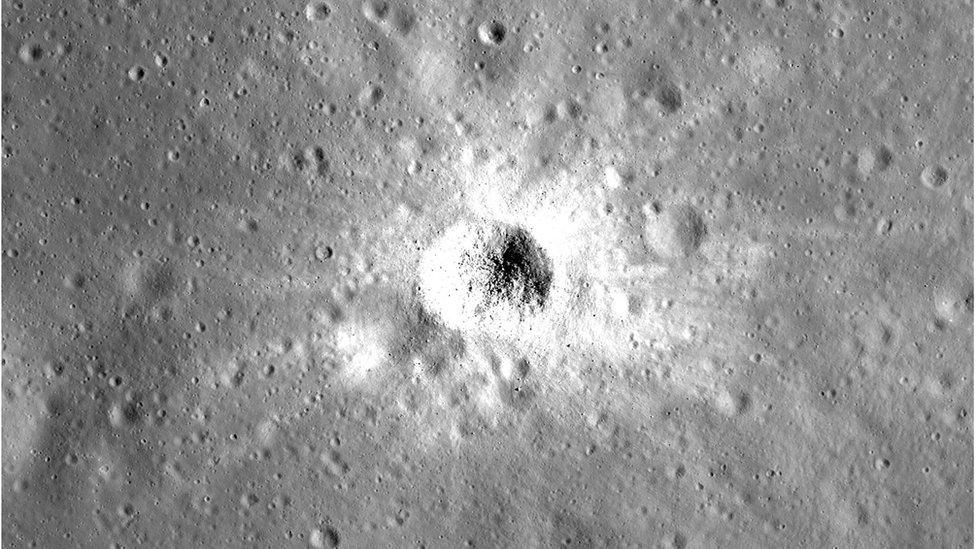
The targeted landing site was on the slopes approaching Shioli Crater, which is just south of the Moon's equator
It is not yet clear how long the craft will be able to operate - it all hinges on the angle of the Sun and solar panels.
The Sun will eventually set on the lander and Jaxa has previously warned that it was not designed to survive a lunar night, when the surface of the Moon is not exposed to the Sun for about 14 days.
But mission engineers have already achieved their pinpoint landing target of getting within 100m (330ft) of their intended landing site.
- Published29 January 2024
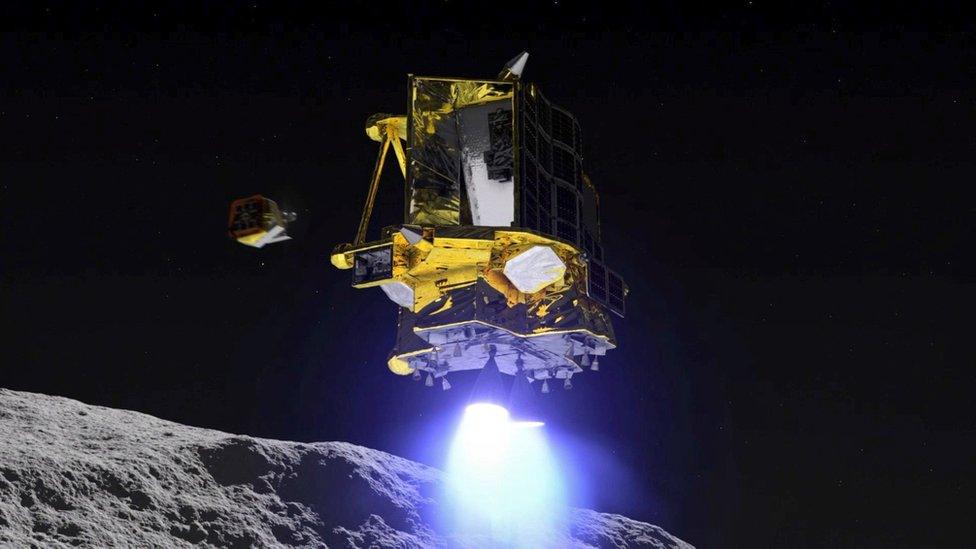
- Published25 January 2024
